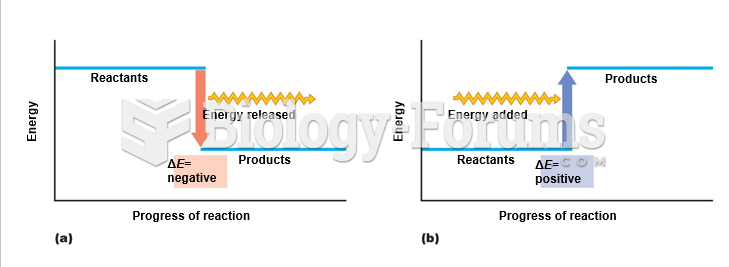|
|
|
Studies show that systolic blood pressure can be significantly lowered by taking statins. In fact, the higher the patient's baseline blood pressure, the greater the effect of statins on his or her blood pressure.
The average person is easily confused by the terms pharmaceutics and pharmacology, thinking they are one and the same. Whereas pharmaceutics is the science of preparing and dispensing drugs (otherwise known as the science of pharmacy), pharmacology is the study of medications.
To maintain good kidney function, you should drink at least 3 quarts of water daily. Water dilutes urine and helps prevent concentrations of salts and minerals that can lead to kidney stone formation. Chronic dehydration is a major contributor to the development of kidney stones.
Blood in the urine can be a sign of a kidney stone, glomerulonephritis, or other kidney problems.
The calories found in one piece of cherry cheesecake could light a 60-watt light bulb for 1.5 hours.
 scanning electron micrograph showing an ovum (pink) released by the ovary at ovulation surrounded by
scanning electron micrograph showing an ovum (pink) released by the ovary at ovulation surrounded by
 Spring force, crankcase pressure, and intake manifold vacuum work together to regulate the flow rate ...
Spring force, crankcase pressure, and intake manifold vacuum work together to regulate the flow rate ...





